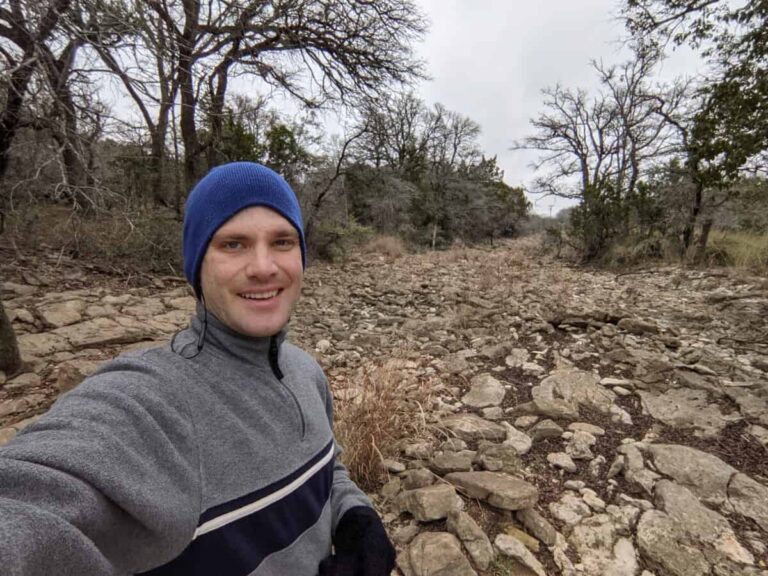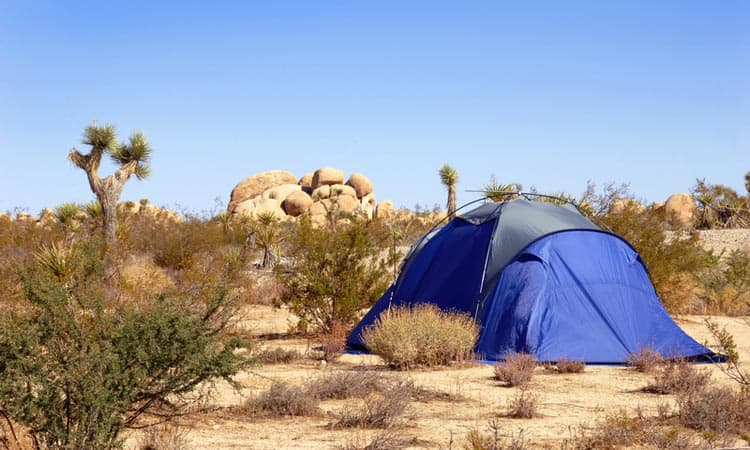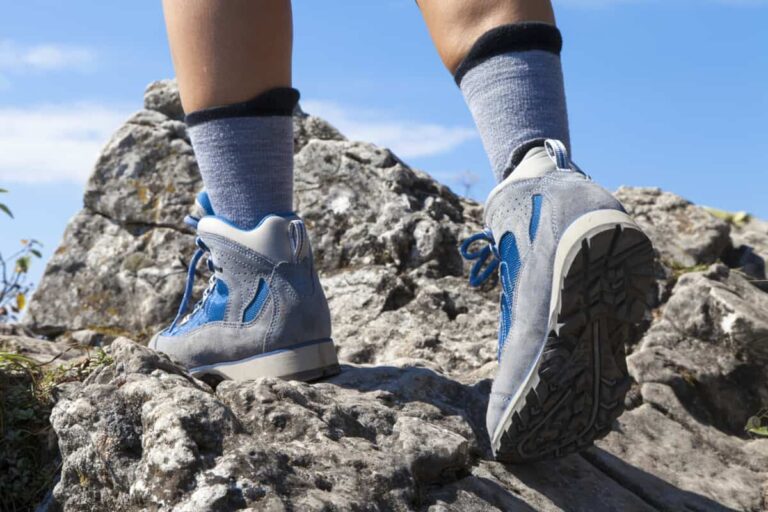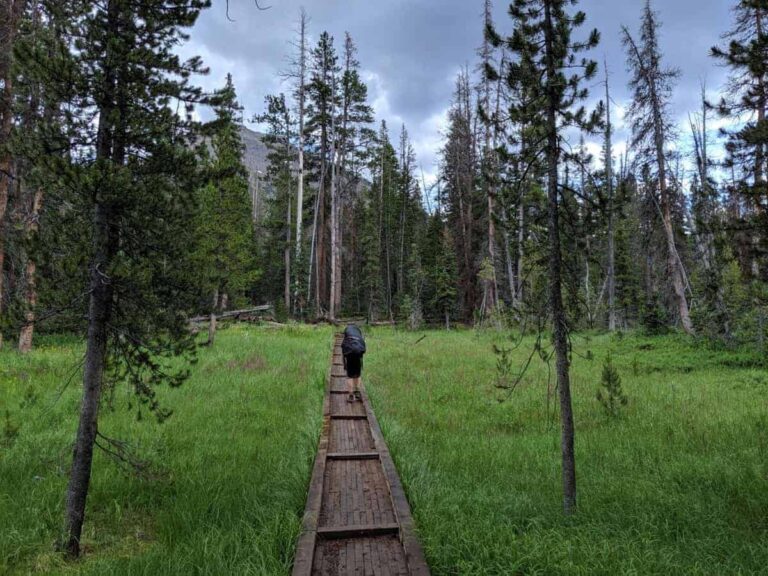Is Hiking Dangerous?
Should I be worried about the dangers of hiking? How can I keep myself safe while I’m out on a hiking trail?
Hiking itself is not considered a dangerous activity. In fact, the fatality rates for hikers are extremely low. However, there are risks that come with taking to the trails. Some of the risks of hiking can include joint injuries, bites from snakes or other types of animals, dehydration, and more.
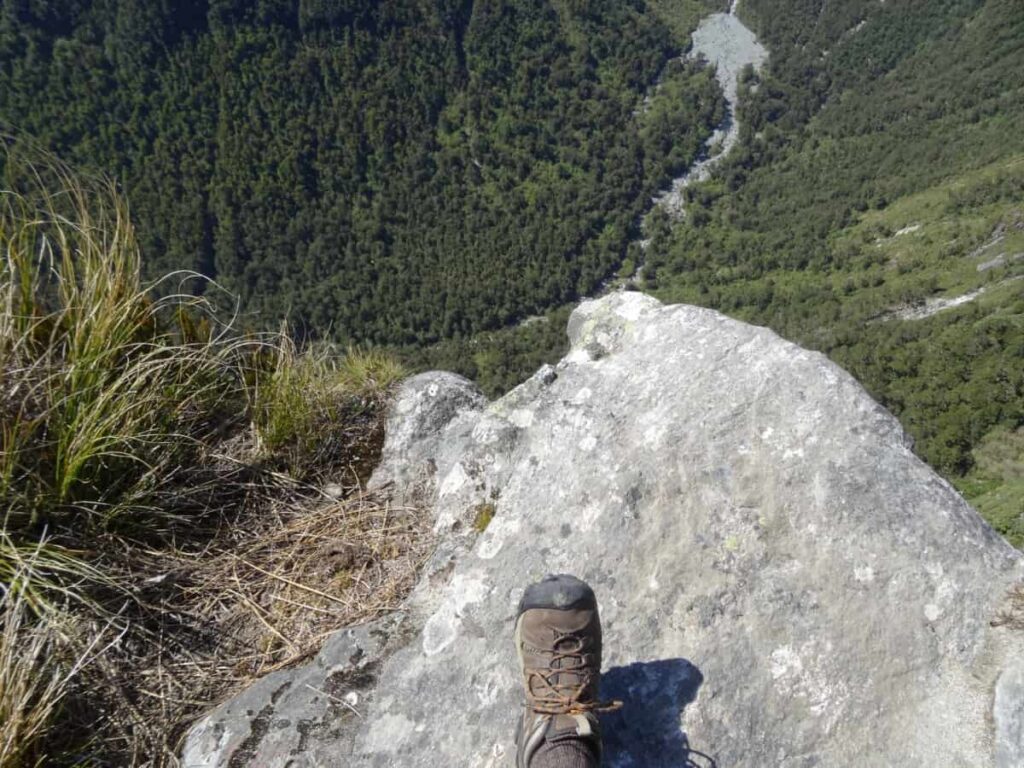
Hiking is an awesome outdoor activity. It helps you to get exercise and fresh air while spending time in a gorgeous natural environment. On top of that, it’s often considered to be a very safe activity. That said, there are risks involved with hiking just as there would be with going to the store, on a date, or even going for a swim.
Because of that, it is important to know what dangers do exist for hiking and what you can do to keep yourself safe. Keep reading and you’ll get an in-depth look at what the data says about the dangers of hiking, what dangers exist while you’re on the trail, and what steps you can take to prepare for them.
Is Hiking Dangerous? What Does The Data Say?
Ultimately, hiking isn’t an extremely dangerous activity. Naturally, the risks involved can depend on how prepared the hikers are as well as the length and difficulty of the trail they are choosing to explore. That said, most of the issues people can experience while hiking tend to be pretty mild. Although death can occur during a hike, there are plenty of activities we engage in on a day-to-day basis that come with a higher risk.
To give you a clear overall picture, the National Park Service listed the overall mortality rate for deaths in national parks as 0.1 deaths per 100,000 visits as of 2016 (Source 1). Keep in mind that the number here includes a wide variety of activities that can take place in a national park, not just hiking. Meanwhile, the 2019 mortality rate listed for incidents involving a motor vehicle is 11 deaths per 100,000 people (Source 2). That alone should give you the clear image that hiking deaths are extremely infrequent. They can happen, but just the act of driving is considered much more dangerous.
For an even deeper look into the dangers of hiking, let’s take a look at a couple of studies that take place in specific areas. The first of these is a study that focused on 8 parks located in California. Between 1993 and 1995, a grand total of 30,340,615 visits to these parks took place. Among that number, only 78 deaths were recorded. The following table will give you a brief look at what activities ended up leading to some of those deaths:
| Activity | Number Of Deaths (Out of 78) |
|---|---|
| Hiking | 7 |
| Swimming | 9 |
| Rock Climbing | 5 |
| Driving | 9 |
| Suicide | 5 |
| Unknown Activity | 26 |
The risks of hiking really become solidified when we take a look at an actual hiking trail. As an example, the Half Dome Day Hike, located in Yosemite National Park has been home to only 29 recorded deaths over the past 85 years according to this study.
The breakdown of those deaths is as follows:
| Activity | Percentage Of Deaths |
|---|---|
| Climbing | 36% |
| Suicide | 26% |
| Hiking | 16% |
| Using Cable Handrails | 16% |
| Base Jumping | 6% |
With hiking coming in at only 16 percent, you can start to see how hiking is far from the most dangerous activity out there. During the 85 years that these deaths were recorded, that’s only about 5 hiking deaths in total.
Hiking may not be a particularly dangerous activity, but what about camping? Are you in more danger if you’re spending more time out in the woods? Much like hiking, there are some dangers worth considering when you’re planning to go on a camping trip. Learn more about camping dangers in our article on the subject here.
14 Reasons Hiking Can Be Dangerous
Although hiking is quite safe the majority of the time, there can be some situations worth being prepared for. Injuries, illness, or an attack of some kind can happen at any point.
As long as you’re prepared for the potential dangers you may run into while hiking, odds are you’ll be able to avoid problems (or at least get help much more quickly). Before you head out on the trail, make sure you’re prepared for these 14 potential hiking dangers.
Falls
More often than not, taking a fall while you’re out on the trail might mean you get scraped up, end up with a sprain, or break a bone. However, it is important to note that falls are a leading cause of death when it comes to individuals who have passed away while hiking.
Essentially, most falls won’t cause death, but a high percentage of deaths while hiking is caused by falling. According to this study on hiking deaths in the Canton Of Berne in Switzerland, falls from nearly any altitude can result in death. Most often, brain injury from falling is what ultimately caused the death of 77 hikers between 2003 and 2018.
The two main contributing factors to these deadly falls included a lack of the right equipment and choosing to stray from the trail. When you’re out in the wilderness, it’s extremely important to stay on the marked path and avoid any part of a trail that you don’t have the necessary equipment for.
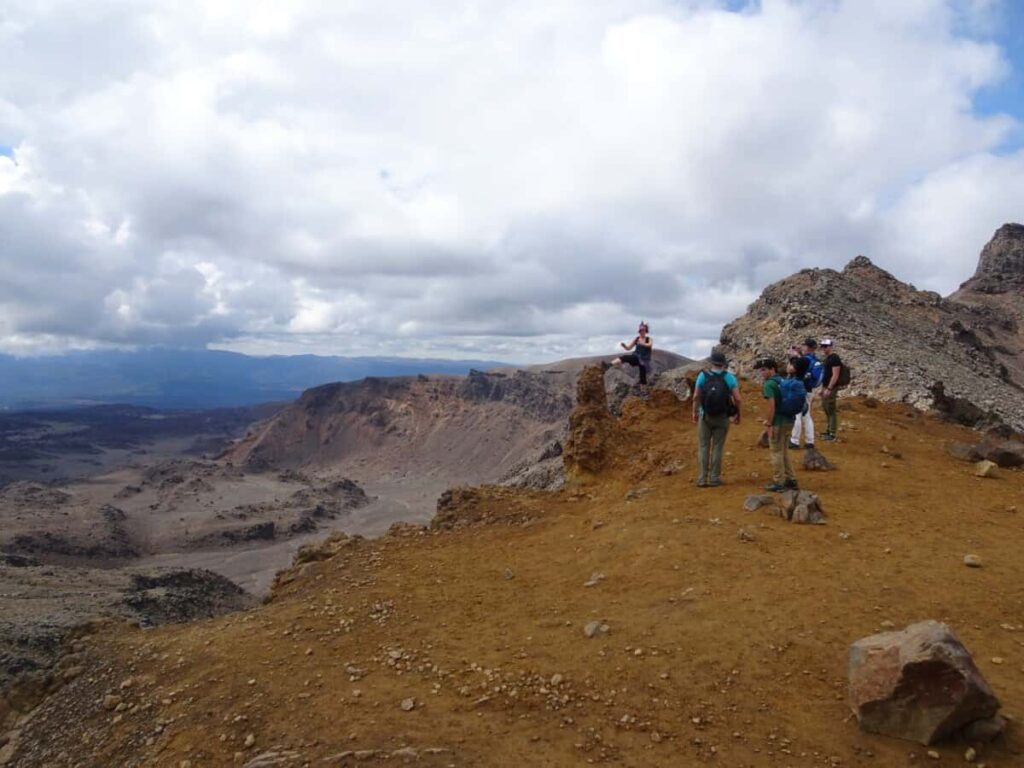
Gastrointestinal Distress
When it comes to longer hikes, one of the primary issues that can keep hikers from reaching the end of the trail is due to gastrointestinal distress. There are a variety of reasons this can happen. Maybe it was something a hiker ate, or perhaps they are just coming down with an illness.
However, a large cause of gastrointestinal problems during a hike can be due to drinking water that hasn’t been decontaminated correctly. No matter how clear a nearby stream might look, it’s still a good idea to take the time to boil the water and ensure it’s safe before drinking.
Otherwise, you can end up struggling with issues like diarrhea or nausea. Neither is awesome, but they can be even more difficult to deal with when you’re out in the wilderness.
Sunburn/Skin Problems
While skin problems may not typically be considered as dangerous as an attack from a bear or a nasty fall, they can become extremely uncomfortable. The most basic of these issues is sunburn.
It can be easy to forget about the effects of the sun when you’re busy enjoying the nature around you, but a nasty sunburn isn’t something that is fun to hike with. Beyond that, sunburns can also increase your risk of getting skin cancer, according to Skincancer.org.
Another issue you may come across while hiking includes plants that can cause skin problems if you happen to rub up against them. These nasty plants include poison oak, poison ivy, nettles, hogweed, poison sumac, and more. In some cases, the major discomfort these plants cause is enough to make you want to leave the trail and head home to heal.
Joint Injury Or Pain
Joints are all too easy to upset or injure. Even walking on a relatively flat, easy trail can result in joint pain of various kinds of accidental sprains. Consequently, they are among the most common injuries that you can experience while hiking.
According to this study from the National Outdoor Leadership School, 1,940 incidents were tracked over a period of about four years. 50% of those incidents reported were due to strains and sprains of ankles, knees, and backs. That alone shows that these kinds of injuries are incredibly common, even among younger individuals who may spend more time outdoors.
The good news is, a sprain or strain is extremely unlikely to be fatal if you’re close to other people. Most often, the cure for a strain just includes some rest, ice, and gentle care until you’re able to get back onto the trail again. A sprain can be very dangerous if you are in the remote wilderness–so it’s important to not go solo where nobody knows where you are.
Insects And Arachnids
While larger animals might be easier to spot and avoid, insects and arachnids can be just about anywhere without you even noticing. They’re small, they often seem to lack the fear of humans that other creatures have, and they can be dangerous.
Depending on where you’re hiking, there could be any number of creepy crawlies to deal with. From biting insects to bees, hornets, wasps, and poisonous spiders, it’s wise to be prepared for any kind of bite or sting that might happen while you’re outdoors.
Wearing clothing that covers as much skin as possible is a good idea in areas that are prone to these kinds of creatures. Additionally, bring along an insect repellent to help with keeping them away from any exposed skin. Finally, keep a first aid kit handy with any items you might need for bites and stings. (If you’re looking for natural insect repellants, I compiled a list of options, here.
Some areas are at higher risk of bites than others. In the Southeast, especially ticks are a huge problem. Ticks are carriers for the dreaded Lyme disease. Long clothing, although not as comfortable in hot weather, is essential for keeping those terrible ticks at bay.
Furthermore, you’re at risk of leaches in lots of rivers in the Southeast U.S. as well.
While many of these bugs are annoying at best, they can be dangerous and cause lasting harm. So make sure to know what critters you’re up against before going somewhere.
Illness
During a hike, individuals can also begin to feel ill, or start to experience some kind of serious physical problem. That could be something along the lines of the gastrointestinal distress I discussed earlier, or it could be something that isn’t quite so straightforward. It all depends on the root cause.
If you’re hiking for several days and begin to feel ill and find yourself with a rash, it could very well be due to a tick bite. Ticks can easily go unseen, and if you’re busy enough the bite might even go unnoticed until the symptoms of Lyme disease start to show up. Not every tick bite will bring Lyme disease, but it can absolutely happen.
According to Mayo Clinic, these symptoms can show up in as little as three days. Whether you’re back home at that time or still out in the wilderness, it’s important to keep an eye out for symptoms so that you can get treatment as quickly as possible.
Snakes
Much like insects and arachnids, snakes can be much sneakier than the larger animals you may run into while out on a hike. It’s much more unlikely that they’ll end up hidden away somewhere in your clothing, but entirely possible that you might end up too close for comfort without even realizing it.
If you’re hiking in an area where venomous snakes are rare, then you may have little more to worry about than a painful bite. However, there are plenty of areas in the US where a bite from a snake could easily become a life or death situation.
Some venomous snakes, such as rattlesnakes, will often try to provide a warning before they strike. In most cases, the snakes you may come across don’t want to be near you any more than you want to be near them.

Wherever you’re hiking, and whatever kinds of venomous snakes may be around, your best bet is to have a plan in the event of a snake bite. On top of that, be vigilant at all times to ensure you aren’t getting too close or accidentally stepping on snakes that might be in the area.
The best defense is to avoid snakes entirely–stay on the trail, and pay special attention to long grass.
Bears And Mountain Lions
Bears and mountain lions are almost always among the topics covered when you’re learning about hiking for the first time. There are a wide variety of environments they can show up in, and knowing how to respond to these animals can end up saving your life.
Bears are often easier to spot, but it can be more difficult to determine how to respond to them. The strategies you might use for a black bear may not work well for a grizzly bear. Generally speaking, black bears are smaller and more easily frightened. Meanwhile, grizzly bears require a much more cautious response because they tend to be more aggressive.
For some, the even more frightening predator is the mountain lion. This is largely because you’re less likely to run into one by accident. Mountain lions are experts at stalking and could easily follow you without you knowing. If you do happen to see one, your best bet is to maintain eye contact and retreat slowly and carefully.
If you see fresh signs of either a mountain lion or a grizzly bear on your hike, you’re far better off airing on the side of caution and leaving the area.
All that said, bear and mountain lion attacks are still extremely rare. Check out my article here where we talk about the numbers.
Heart Attacks
A heart attack is scary no matter where you are when you experience it, but a heart attack while you’re out on a hiking trail can be downright terrifying. After all, you may be out in the middle of the wilderness completely alone, or only seeing another person at sparse intervals.
Most folks are aware that in order to decrease your chances of a heart attack while on the trail, you need to decrease the chances overall. That means a healthier diet and more exercise in your daily life.
When it comes to avoiding heart attacks specifically on the hiking trail, there are a couple of things you can do. The first is to be very honest with yourself when you’re choosing a trail to hike on. Don’t do more than you know you can handle. Many hikers want to get on the exciting, intense trails but it’s better to do so at a slow, steady pace. If you haven’t done serious exertion consistently, you might be setting yourself up for trouble.
Second, be aware of the signs that might let you know a heart attack is on the way. These include symptoms like pain in your shoulders, chest pain, an inability to catch your breath, and feeling lightheaded. For more information on heart attacks and their symptoms, you can check out this page from the CDC.
Additionally, data from 8 national parks were analyzed, and it was found that out of the 78 deaths that had occurred in the parks 17% were related to heart problems. (source 2)
Other Animals
Bears, mountain lions, and creepy critters aren’t the only creatures that might present a danger while you’re hiking in the wilderness. A variety of other animals such as coyotes, wolves, wild dogs, and even moose can become a problem.
For adults, coyotes are rarely an issue. After all, they are quite small and often don’t bother trying to attack anything too large. However, they can be problematic if you’re bringing pets or children along on your hike. Make sure to keep any smaller beings close to you if you hear or see coyotes in the area. We have more information about staying safe from Coyotes, here.
Wild dogs and wolves can be unpredictable in terms of danger, and they are always worth keeping an eye on. Moose are much the same in that they tend to mind their business if you keep your distance from them, but they can quickly become very dangerous if you get too close.
Something especially important to note is that any animal can be dangerous if it has become rabid. Keep an eye out for any animal that is acting strangely, whether it’s a wolf, dog, raccoon, or even a squirrel. Stay away from any animal that might be rabid and make sure to report the animal to park rangers or other authorities as quickly as possible.
Criminal Activity
From time to time, most of us have heard stories of someone being attacked by another person while on a hiking trail. Even popular hiking paths are no exception to this possibility. Predatory animals may be frightening, but they aren’t often interested in attacking people for no reason.
On the other hand, predatory humans can be much more dangerous. No matter where you’re hiking, it’s a good idea to not be alone. It’s by far one of the best defenses you can have, is to bring a friend. Additional items that may help you if another human is causing you trouble is a GPS, a cell phone, and pepper spray.
Your intuition is likely to be your best friend in these kinds of situations. If you’re feeling uncomfortable due to another person on the trail, it’s better to leave early than to put yourself at risk.
Hypothermia Or Heat Exhaustion
Whenever you’re heading out for a hike, you’ll need to make sure to pay careful attention to the weather. Both hypothermia and heat exhaustion can happen more easily than you might think, especially if you aren’t well prepared.
If you’re heading out at any temperature below 50 degrees, make sure you’re dressed warmly. If it’s much colder than that, you may want to bring along some hand warmers as well. Depending on how long your hike is, calorie-dense snacks and extra clothing may also be wise to bring along.
On the other hand, it can be much easier to go out with little preparation on a nice, sunny day. However, heat can cause damage to the body as well, and the last thing anyone wants is to end up miles from their car while experiencing heat exhaustion.
At the very least, always bring water no matter what conditions you’re hiking in.
I wanted to make a special note about heat exhaustion regarding the Grand Canyon. The Grand Canyon is one of the most dangerous places to hike–it has over 300 Search and Rescue events every year. The Grand Canyon has hundreds of thousands of visitors every year, so that may not sound like a lot in comparions–but the Grand Canyon is especially dangerous for several reasons:
- On the hike in, you feel like it’s easy going (because you’re going down), so you may hike farther out than you are planning
- On the hike out, the incline is only uphill without variation. This is far more exhausting than you might realize.
- There is little to no sun protection–so you’re going to go through water very quickly.
Dehydration
As I noted in the previous section, carrying clean water with you is a must regardless of the weather. Cold weather can drain your body’s hydration just as easily as hot weather, though we may not realize it as much.
The most obvious reason for staying hydrated is to keep issues like heat exhaustion and hypothermia at bay. If you aren’t well hydrated, these issues can sneak up on your body more easily. With less strength to fight back, the danger of extreme temperatures can become even more real.

Another aspect we may not realize is that dehydration can also play a role in our ability to think. According to Americanhiking.org, dehydration can leave hikers with a decreased ability to think clearly. As a result, they are more likely to end up lost or injured.
Getting Lost
From time to time, some hikers may decide that their time on the trail has gotten too boring. As a result, they decide to take their adventure away from the reliable path and into the woods. Unfortunately, this can lead to some ending up lost in the woods.
I wish I could say this has never happened to me. I can’t tell you how many times how the “shortcut” really turned out to be disaster waiting to happen.
Often, this is due to a lack of preparation. Someone may decide to step off the trail thinking that they’ll be able to remember where it is and come right back to it after exploring a bit. However, it can be much easier to get lost than people tend to expect.
Once a hiker is lost, chances become high that they will end up lost for at least a single night. This increases the chances of danger because most people don’t tend to bring along a tend or other overnight supplies when they were only planning to be in the woods for a few hours at most.
Adding in the heightened risk of injury or animal attack in the dark, alongside the amount of time it might take to be rescued, hikers who get lost can have a pretty terrible time. Is it worth the extra effort to bring along a hiking GPS to keep you safe? Some may consider this to be an outdated tool, but some may still appreciate having the safety features without the distractions of a smartphone. Learn more about the benefits and downfalls of hiking GPS devices in our article here.
Most Important Things To Do To Stay Safe
While there are risks you may come across while hiking, it’s absolutely possible to hike safely. With the right preparation and mindset, you can avoid the vast majority of the hiking dangers and be more prepared for any accidents that might occur.
The following tips will keep you safe to hike another day, so keep them in mind when you’re planning your next hiking trip.
Know Your Limits
Not everyone who heads out onto a hike can handle the same kinds of conditions or terrain. There’s absolutely no shame in knowing what you can and cannot handle. In fact, choosing hiking paths that you know might even be slightly too easy for you can save you a whole lot of trouble.
Over time, you may find that you can handle greater hiking challenges. However, it’s wise to take it slow and improve your abilities little by little. Jumping into a hike that is too difficult without enough preparation can result in injuries, getting lost, or even death during a hike.
If you’re unsure what your limits are when it comes to hiking, start with a simple, easy path that isn’t far from your home. When it comes to hiking, your personal safety is far more important than the ability to brag to other hikers about what you’ve accomplished. For more of an idea on what hiking pace to aim for and how to gradually increase your pace and hiking capabilities, take a look at our article on the topic here.
Don’t Go Alone
You’re always safer when you have trusted friends or family members with you on your hike. While many experienced hikers may opt to go alone for the sake of peace and quiet, it’s much harder to help if something should happen. Accidents or animal attacks can leave you more helpless without other humans around.
On the other hand, hiking companions can aid in scaring away predatory animals, ensuring everyone is on the right path, and they can carry you to safety if you are injured.
The need for companions may not be quite so serious if you’re hiking on a well-populated trail, but any trail that isn’t visited regularly is one worth bringing at least one friend on.
Bring The Right Gear
Preparation is everything, especially if you’re hiking a new trail or one with a higher level of difficulty. Having the right gear not only allows you to reach the end of that trail but to reach it safely.
If you’re headed out on a trail you haven’t been on before, make sure that you do a bit of research beforehand. Learn all you can about the length of the trail, the terrain you’ll have to travel through, the weather you may experience, and what past hikers have had to say about the path.
When in doubt, it’s better to bring along equipment you may not need than to attempt a more risky part of the trail without an important tool. There’s no need to take unnecessary risks while you’re hiking. On top of that, taking risks when you’re on a more difficult trail could leave you lost, injured, or worse.
Instead, play it safe, bring all the gear you think you might need, and back off if you come across a part of the trail that you don’t feel prepared for.
Let Someone Know Where You Are
Whether you’re choosing to hike alone or not, it’s a good idea to make sure someone who isn’t going on the hike knows your plans. Let them know where you’ll be hiking, who you’ll be with (if anyone), and what time you plan to start and end the hike.
That way, if anything does happen to you during the hike that keeps you from checking in at the end, that person will know to contact authorities and get someone searching for you as soon as possible.
We can’t always plan for every single event that might happen while you’re hiking, but your odds of survival can greatly depend on how quickly help can locate you. It might seem like a lot of work to check in with someone and give them information about each hike you go on, but it can really be worth the effort if you ever do need help.
Bring Water Or A Way to Purify It
It really doesn’t matter what temperature you’re planning to hike in or how long you intend on being out in the wilderness, you can never go wrong with bringing along some clean water. At the very least, it’ll be nice to have a refreshing drink while you’re enjoying the nature around you.
On the other hand, if you happen to get lost, are going on a long journey, or the weather decides to do something unexpected, that clean water could become an extremely important resource.
If you’re going on a long journey and carrying along clean water is going to be too heavy, then make sure to at least bring the tools you need to decontaminate the water around you. Most often, this means boiling water, though in some cases you may also need to filter it to make sure it’s as safe as possible to drink.
There are lots of water filtration options out there, some popular ones being the lifestraw, but the major downside to the lifestraw is that you have to stick your face in the water to purify it. I really like my gravity water filter as it filters passively with gravity, so you can fill up a reservoir during a hiking break and get your lunch ready while your water is cleansed for you.
Learn How To React To Animals In The Area
There is a multitude of different animals you may come across while hiking, and each is likely to respond to you in a different way. Small critters like squirrels, mice, raccoons, and rabbits are likely to bolt as soon as you get too close for comfort.
However, there are also animals that may be more aggressive, or at the very least behave with less predictability. These are the animals you want to look out for and understand how to respond to.
Predators are often the most frightening to come across while you’re on a hike. That said, keep in mind that they typically don’t want your company any more than you want theirs. Most predators, such as black bears, gray wolves, and even cougars would sooner get away from you than attack you.
As with any potentially-dangerous animal, it’s best to keep your distance and try to leave the area as carefully as you can. With the above animals, attacks are extremely unlikely, but if they do attack it’s generally recommended that you fight back. Difficult prey is prey they are unlikely to bother with.
On the other hand, larger animals like grizzly bears and moose require more caution. This seems obvious when dealing with a large predator like a grizzly bear, but we may not always think of moose as dangerous. Moose can be very unpredictable, and their size makes them extremely dangerous if they think they need to defend themselves from you.
If either of these animals attacks, your best bet is to curl up and protect your head and organs as much as you can. Rather than fighting them, your goal should be to make them think you are no longer a threat.
Trust Your Instincts
Playing it safe is your best bet for avoiding problems on a hiking trail. If somewhere along the path you find that you’re feeling uncomfortable, don’t ignore that feeling. Whether it’s due to wild animals, other people on the trail, or the trail itself, turn back if your instincts are telling you to do so.
At the end of the day, it’s better to cut the hike short so that you can survive to hike another day. Attempting to continue on a trail when you aren’t sure about it just isn’t worth the bragging rights.
Don’t Abandon The Path
Leaving the hiking trail is an act reserved for experienced, careful hikers who are armed with the proper tools to avoid getting lost. It’s all too easy to find yourself stuck in the woods for hours or even days if you decide to adventure away from the marked path.
The environment outside of the hiking trail can be highly unpredictable, which means you’re more likely to end up injured. On top of that, it’s going to be more difficult for would-be rescuers to find you if you’re too far away from the hiking trail. Nobody wants to go out to hike for a couple of hours and end up having to stay a night or two in the woods by themselves.


